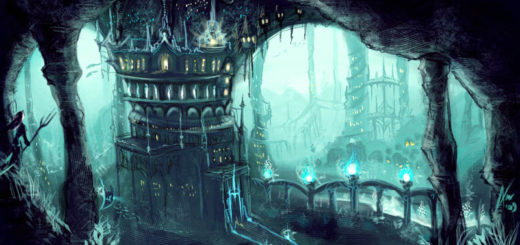Fastest Stars In The Galaxy Spotted With ESA’s Gaia Satellite
An international team of astronomers using ESA’s Gaia satellite, spotted some candidates for fastest stars in the Milky Way.
Just last week, mission specialists behind ESA’s Gaia satellite announced the unveiling of information on over 1.6 billion stars in our galaxy to an eagerly awaiting scientific community. What followed was a frenzied downloading of data as scientists around the globe sought to uncover the mysteries of the Milky Way, according to Room – The Space Journal.

Two white dwarfs in a binary system can spiral toward each other and merge, initiating a supernova explosion. Image: ESO/L. Calçada
One such study has been on white dwarf (WD) binaries and what happens when they get too close to one another. White dwarfs are small, very dense stars that have exhausted their nuclear fuel supplies. A typical white dwarf is about as massive as the Sun, crammed into a volume that is only slightly bigger than the Earth and only neutron stars and black holes are thought to be denser than these leftover stellar remnants.
White dwarfs are also behind one of the most common types of supernova explosions in the local Universe – Type Ia supernovae (SNe Ia). SNe Ia occur when mass from one star is transferred onto a white dwarf companion. When this happens, it triggers runaway nuclear fusion in the white dwarf, causing it to explode as a supernova.
To make matters more interesting, the companion star can be another white dwarf. In this case, a possible mechanism for triggering a Type Ia supernova is the merger of the two white dwarfs. This situation is called a double-degenerate scenario and in recent years these white dwarf binaries have been earmarked as one of the most promising types of Type Ia supernova progenitor scenarios.
If this is indeed the case then researchers have suggested that when a Type 1a occurs because of two white dwarfs, one of them will survive the explosion and be flung away at speeds beyond a 1000 kilometres a second.
Hoping to see evidence of this in the form of fast stars whizzing about the Milky Way, an international team of astronomers have scoured the second iteration of the Gaia data and found some likely candidates. From seven candidates found hidden in the data, followed up by further observations with ground-based instruments, three sources were consistent with having previously been white-dwarf companions (to other white dwarfs) before at least one of them exploded as a Type Ia.
Aside from speed, the team were also looking for other tell-tale signs that could distinguish if these ejected stars are the rightful survivors of the explosion. For instance the survivor should be hydrogen-free, because its hydrogen layer will have been transferred to the primary dwarf prior to the explosion. Also, any heavy metals expelled in the explosion of the doomed primary dwarf might still be present in the atmosphere of its once close companion.
Given their characteristics these three candidates, nicknamed WD1, WD2 and WD3 very nearly fit the bill of being bonafide survivors, say the team whose lead author on the research paper is Ken Shen from the University of California, Berkeley.
What stops them from being confirmed true runaway white dwarfs is that the candidates are much brighter and have larger radii than expected. This, the team state, could be due to unknown mechanisms that may have changed their appearance following the explosion.
As such, before these these stars can earn their title as being D6 white dwarfs – white dwarfs that survived dynamically driven double-degenerate double-detonation Type Ia supernovas (Ds x 6) – further high-resolution spectroscopy and detailed stellar evolution calculations will need to be performed.



 Creators of mankind
Creators of mankind Description of “Tall white aliens”
Description of “Tall white aliens” Where they came from?
Where they came from? About hostile civilizations
About hostile civilizations The war for the Earth
The war for the Earth “Tall white aliens” about eternal life
“Tall white aliens” about eternal life Video: “Nordic aliens”
Video: “Nordic aliens” Aliens
Aliens Alien encounters
Alien encounters The aliens base
The aliens base UFO
UFO Technology UFO
Technology UFO Underground civilization
Underground civilization Ancient alien artifacts
Ancient alien artifacts Military and UFO
Military and UFO Mysteries and hypotheses
Mysteries and hypotheses Scientific facts
Scientific facts


















